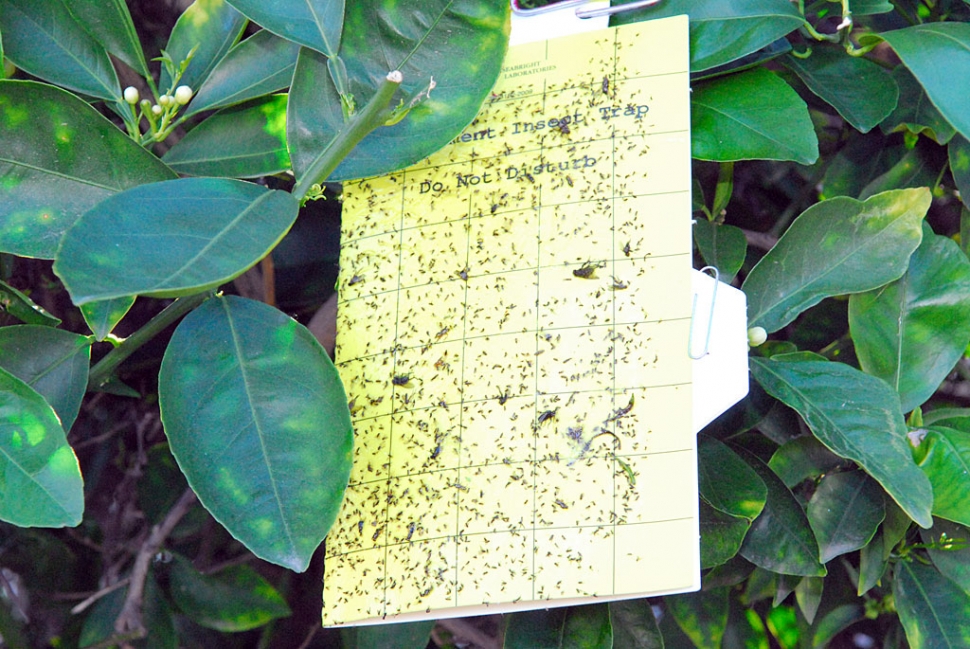|
Yellow Panel Traps
By Anonymous — Wednesday, March 10th, 2010
 Seabright Laboratories’ Yellow Panel Traps (shown attached to an Orange tree at the El Dorado) are used by the California Department of Food & Agriculture, the US Department of Food & Agriculture, and numerous universities, researchers, and commercial growers to monitor for the glassy-winged sharpshooter. The Sharpshooter is native to North America (northeastern Mexico), but has spread into the United States, where it has become an agricultural pest, laying a mass of eggs on the underside of leaves. They feed on a wide variety of plants. Scientists estimate that host plants for this sharpshooter include over 70 different plant species. Among the hosts are grapes, citrus, almond, stone fruit, and oleanders. Because of the large number of hosts, glassy-winged sharpshooter populations are able to flourish in both agricultural and urban areas. They likely were introduced from the southeastern U.S. as eggs on nursery stock, and were first observed in Orange and Ventura counties in 1989. It has a large plant-host range and is especially abundant on citrus. Oleander is found in 20% of all home gardens in California, and is a mainstay of landscapes in shopping centers, parks and golf courses. The California Department of Transportation (Caltrans) maintains oleander in over 2,100 miles of freeway median. It is estimated that Caltrans alone stands to suffer at least a $52 million loss if oleander on highway plantings is lost. |
